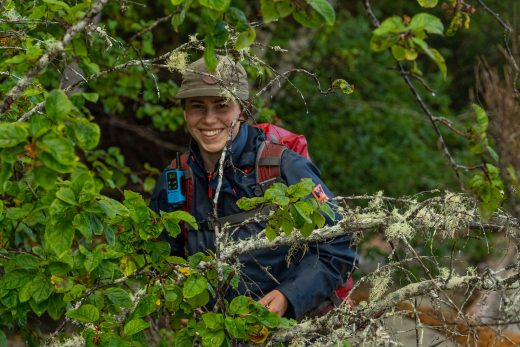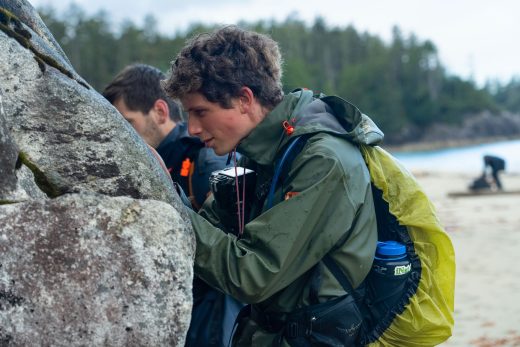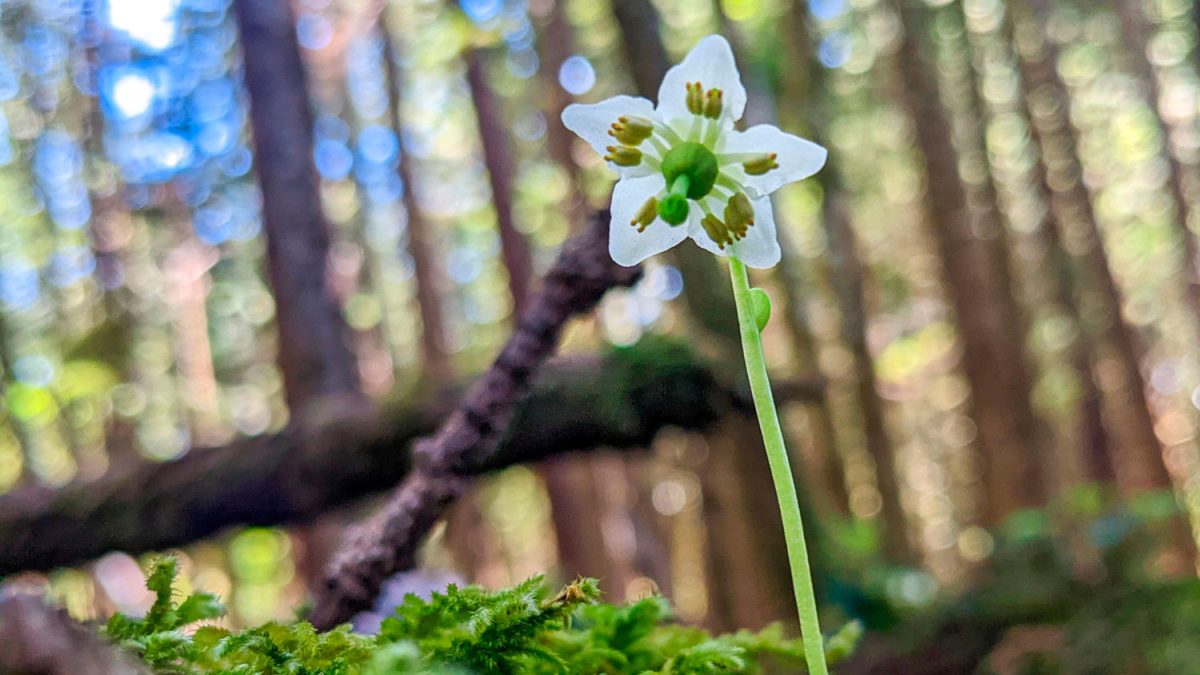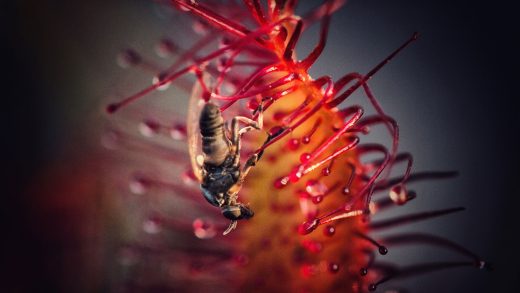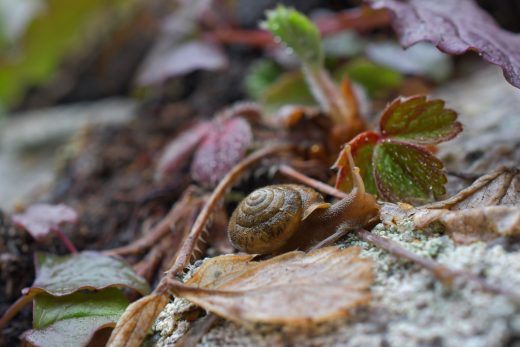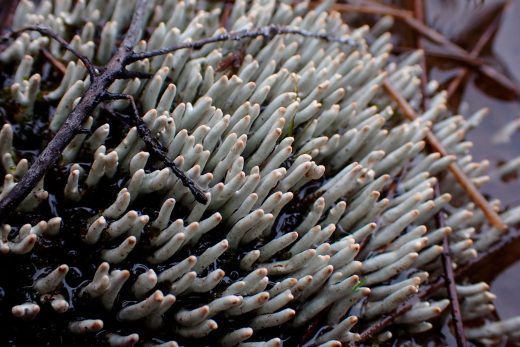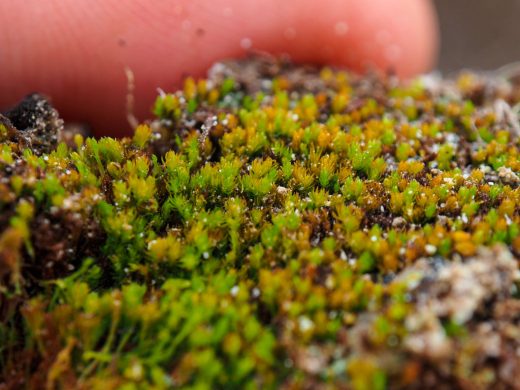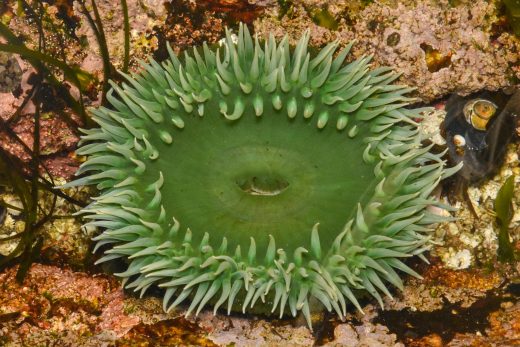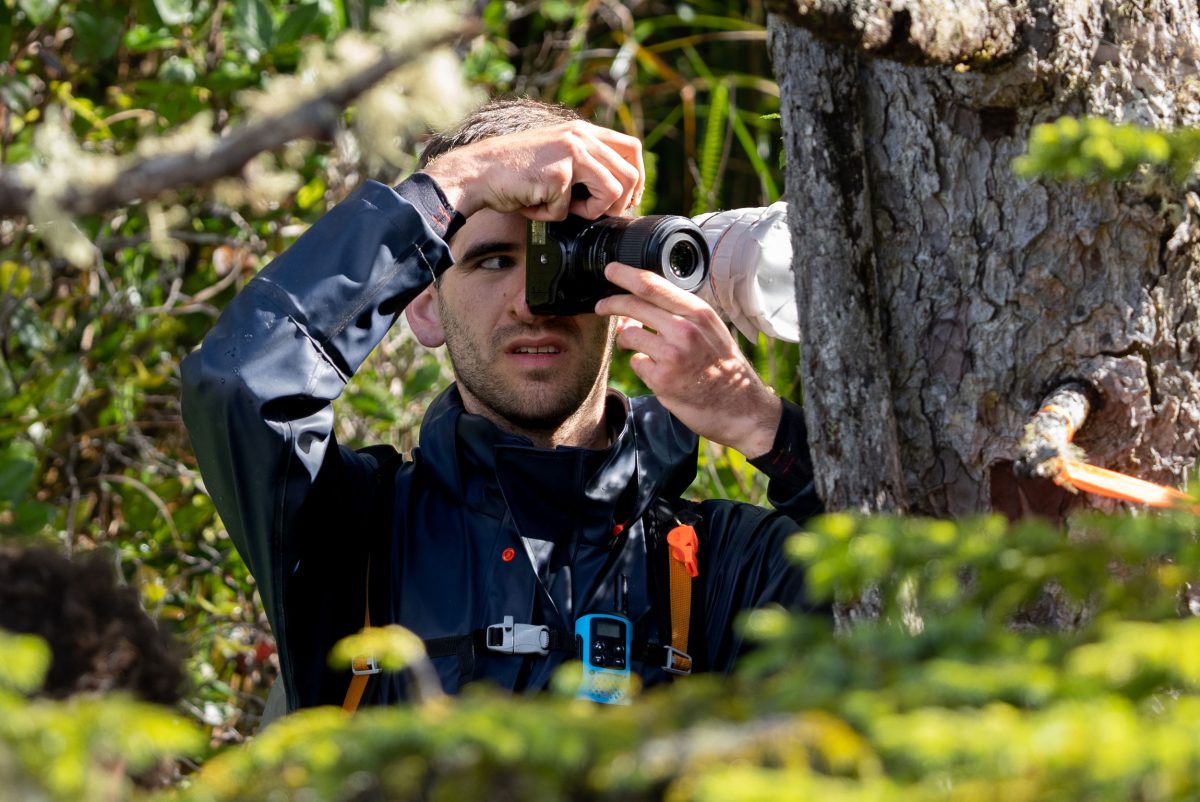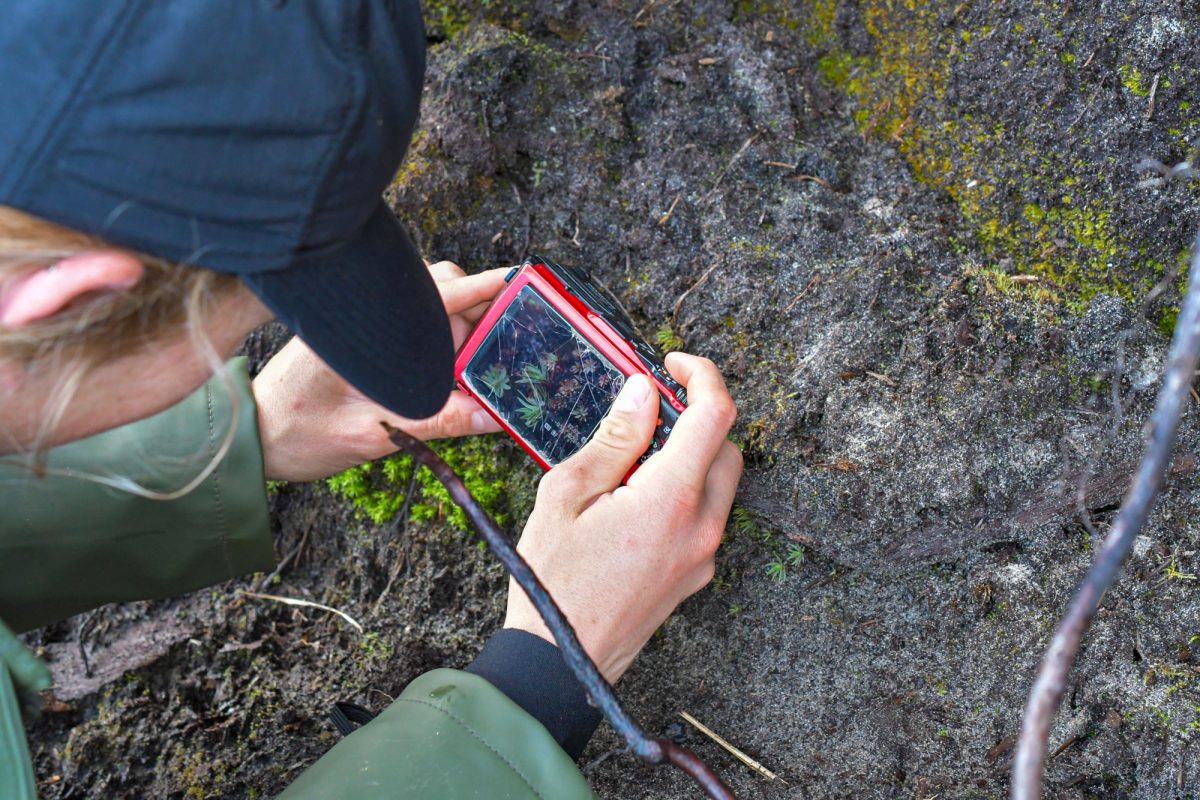Weird, Rare, and Everywhere
In the bogs of Hecate Island, British Columbia, a writer and novice naturalist joins researchers for a glimpse of a multiyear biodiversity mission—and gets acquainted with some odd organisms.
Article body copy
Our boat noses into the craggy, primordial shore of Hecate Island. The first two off the deck have their hand lenses out before the rest of us touch land. They are Randal Mindell and Dan Tucker, both experts in mosses and liverworts, called in for their deep knowledge of these underappreciated oddball plants.
The beach is bounded on one side by a granite outcrop shining silver in the morning sun. Mindell and Tucker are peering at the green tufts that sprout from dripping cracks in the rock. The moss’s minute architecture snaps into focus through their lenses, which are palm-sized magnifying glasses sans handles—jeweler’s lenses for field biologists. Every so often, one of them swings a camera off their shoulder to snap a photo.
Right behind them, hopping single file off the aluminum-hulled cabin boat onto a shoreline boulder, are four apprentices. They’ve all landed on one of the best summer jobs out there for budding biologists: traveling through British Columbia’s provincial parks to document as many living things as they can find, from great horned owls to long-toed salamanders.
Budding biologists Eva Ullström (first photo) and Finn McGhee survey the shoreline of North Beach on Calvert Island, British Columbia. Photos by Kristina Blanchflower
Soon they, too, are hunched over the granite, peering through their lenses. Last comes the leader, Brian Starzomski, an ecologist from the University of Victoria in British Columbia.
He is one of two masterminds behind this bioblitz conducted at the Hakai Lúxvbálís Conservancy. Managed by BC Parks and the Heiltsuk Nation, Hakai Lúxvbálís is a 123,000-hectare protected area on and around Calvert Island on British Columbia’s central coast. Starzomski is also behind the larger project it’s a part of: a multiyear effort to document the flora and fauna in more than 1,000 provincial parks, conservancies, and ecological reserves spread across British Columbia.
The Hakai Lúxvbálís Conservancy is itself part of the Great Bear Rainforest, a special management area approximately the size of Ireland that encompasses the central portion of the province’s island-dotted coastline.
Outsiders of all stripes are drawn by the abundance of flora and fauna here, leading many to describe it as an “untouched wilderness.” That’s one thing the Great Bear Rainforest emphatically is not. A closer look reveals that much of it—bay, bog, or patch of forest—bears the mark of human hands. Bark-stripped cedars and ancient clam gardens speak to a lasting Indigenous presence. The region also shows the presence of postcolonial industrial society and the lingering scars of resource extraction.
While not mythically pristine or primordial, the Great Bear Rainforest remains a global hotspot for biodiversity, home to one-quarter of the world’s remaining ancient coastal temperate rainforest. To much less fanfare, this band of coastline that runs north to the Alaska Panhandle hosts the greatest diversity of bryophytes in all of the continent north of Mexico.

Bryophyte experts Dan Tucker (left) and Randal Mindell set out to stalk mosses and liverworts. Photo by Kristina Blanchflower
Bryophytes are ancient, thought to be the first plants to leave the sea. Some 475 million years later, they lack the xylem and phloem that vascular plants use to transport water and nutrients. As a result, they remain tiny and easy to ignore, even for ecologists.
“My eyes used to glaze over when people talked about mosses and liverworts,” admits Starzomski.
That changed during a field trip to Ellesmere Island, known by the Inuit as Umimmaat Nunaat, in Canada’s Arctic; there, bryology researcher Catherine La Farge-England showed Starzomski a particular moss growing at the edge of a retreating glacier. Starzomski learned it had regenerated after spending centuries buried under ice.
“Now I find their stories so compelling,” he says.

Thanks to the region’s near-constant rain and cool temperatures, almost 600 species of bryophytes carpet vast swaths of British Columbia’s central coast, including Calvert Island. Photo by Shanna Baker
At a planetary scale, these stories include a leading role in the fight against climate change. In temperate and Arctic regions, peat is formed mainly from decomposed sphagnum moss, along with other plants, such as shrubs, herbs, and small trees. Peat stores one-third of the world’s terrestrial carbon—twice as much as all the forests on Earth.
Bryophytes also irrigate vast tracts of land throughout tropical cloud forests by sucking moisture from the air and transforming it into liquid; the condensed vapor dripping off trillions of miniature leaves flows into streams and rivers that water the lowlands.
But it’s down at the scale of individual species that bryophytes really start to show some personality. There is a moss, Daltonia angustifolia, that grows on the backs of beetles. A genus of liverwort, Radula—three species of which were found in this bioblitz—can produce cannabinoid molecules not unlike those found in cannabis plants. Scientists are still working on pharmaceutical applications, but anyone interested in recreational study can already buy Radula preparations online.
Goblin’s gold, or Schistostega pennata, is a glow-in-the-dark moss that flourishes in caves and other light-starved microbiomes where few other plants can survive.
“The search for something weird and rare is awesome,” says Starzomski, who spent months looking for goblin’s gold after he first heard about it. Thanks to a tip from Mindell, he finally saw a patch growing beneath the rootball of a Douglas fir tree on Vancouver Island, British Columbia.
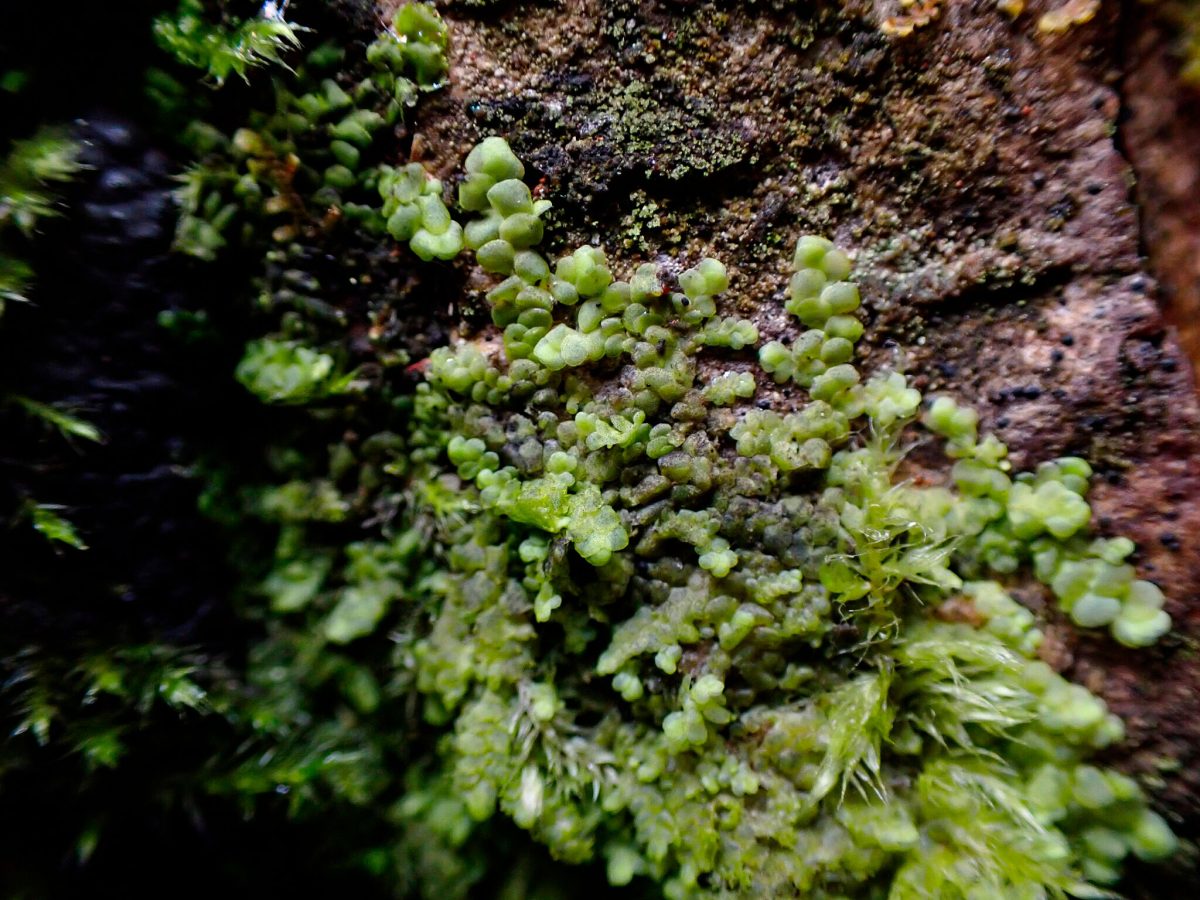
Radula complanata is part of a genus of liverworts that includes a handful of cannabinoid-producing species. Photo by Randal Mindell
For the next 20 minutes, I eavesdrop as the biologists on Hecate Island begin their treasure hunt. They alternately admire and mock one another’s discoveries, covering ground at the pace of grazing deer.
“You seeing that central frill at the tip?” Mindell asks Braden Judson, a younger researcher who’s unsure what he’s looking at, which happens to be one of the most common and least memorable mosses around. “That’s Grimmia torquata. Congratulations, you found the shittiest moss in the bryophyte kingdom.”
A moment later, a separate ID yields a genuine compliment from Mindell: “Oh, you did it, you rat bastard! You found some Ptychostomum!”
Finn McGhee, another student-apprentice whose sharp gaze and eccentric demeanor give him the mien of a budding arch-mage, takes pity on me. “There are probably between 25 and 40 species of moss growing on this 20-meter stretch of shore,” he tells me. “That’s why we’re moving so slow.”
First photo: Single delight (Moneses uniflora), also known as one-flowered wintergreen among other names, sprouts among the trees. Second photo: A black fly hangs onto the sticky secretions of a carnivorous round-leaved sundew (Drosera rotundifolia). Third photo: A western toad (Anaxyrus boreas) holds court on the forest floor. Photos by Kelly Fretwell, Grant Callegari, and Bennett Whitnell
Bryophytes are not the only focus. Over the course of the week, the seven researchers will explore both Hecate and Calvert Islands from the tidal shoreline to the forest, logging everything from hermit crabs and spotted tussock moths to mock azaleas and (highly poisonous) green false hellebores.
But bryophytes are a relatively understudied part of the Hakai Institute’s ecological archive, and one of the motivators of this bioblitz—the fourth hosted by the institute’s Calvert Island Ecological Observatory—was to flesh that archive out.
The evening before I joined the group on the field survey, I sat in on the Species of the Day presentations, a Hakai bioblitz tradition—essentially a show-and-tell with an edge of playful competition. Every evening, researchers nominate the most interesting plant, fungus, or animal they found that day, share a photograph, and tell its story. At the end, they vote to select a winner.
There were plenty of contenders for the top prize that night: Starzomski had spotted a queen’s veil mountain fern, curiously far from its typical subalpine habitat; there was also a parasitic wasp no larger than a poppyseed and a “very handsome” western toad, among others. Mindell nominated a sphagnum known as delicate peat moss (Sphagnum tenellum).
“It looks very small and inconspicuous,” Mindell said of his moss, “but unlike almost any other plant on Earth, sphagnums are total regulators of massive tracts of land.”
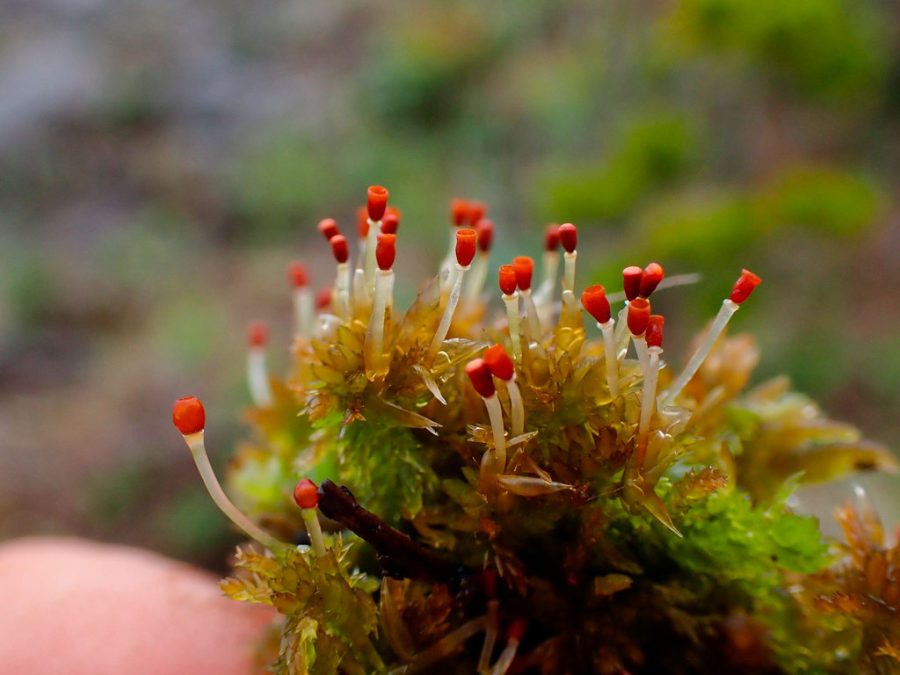
Sphagnum mosses, like this delicate peat moss (Sphagnum tenellum), have transformed wetlands around the world. Photo by Randal Mindell
A variety of attributes enable sphagnum to colonize and transform vast landscapes: they absorb so much water that they can fill in ponds and shallow lakes, and as sphagnum spreads, it acidifies the soil to a degree that only a handful of plants can tolerate.
In this way, sphagnum “creates an entirely unique landscape that sphagnum is essentially in charge of,” says Mindell. “Almost three percent of terrestrial ecosystems on Earth are sphagnum wetlands, and it’s neat to think that this little thing manages to control so much area.”
Three percent may not sound like much, but that adds up to four million square kilometers—larger than the area of India—spread around the world. Their reign spans temperate, tropical, and alpine biomes, though they prefer the northern hemisphere’s boreal region. Also known as peatlands, they can be found in 180 countries and account for half of the world’s wetlands.
Thanks to its absorptive capacity, sphagnum has been used for everything from diapers to menstrual pads. “Up until the ’80s,” Mindell told us, “there were advertisements for pads that proudly declared ‘Made with sphagnum!’”
Mindell’s sphagnum won Species of the Day on the strength of its relationship to ecosystems and human culture alike. Tucker, gracious in defeat (he’d nominated an alder-loving moss), noted that sphagnum is also antimicrobial and was used as a wound dressing on battlefields up through the First World War.
First photo: Northwest Hesperian snails (Vespericola columbianus) are usually found in wet forests but sometimes venture out to the beach. Second photo: Waterfingers lichen (Siphula ceratites), also known as waterworm, is rare among lichens for its ability to live in standing water for long periods. Photos by Kelly Fretwell and Eva Ullström
A Brief History of ’Blitzing
The first official bioblitz was held in 1996 at Kenilworth Park and Aquatic Gardens in Washington, DC. Sam Droege, a wildlife biologist and one of the event organizers, later recounted to National Geographic that the original concept was to allow biologists to return to their “ancestral” state as curious explorers “who actually went out and tried to find things instead of filtering out forms, or gridding on a plot, or counting the number of tarsal segments and measuring them to within 15 microns.”
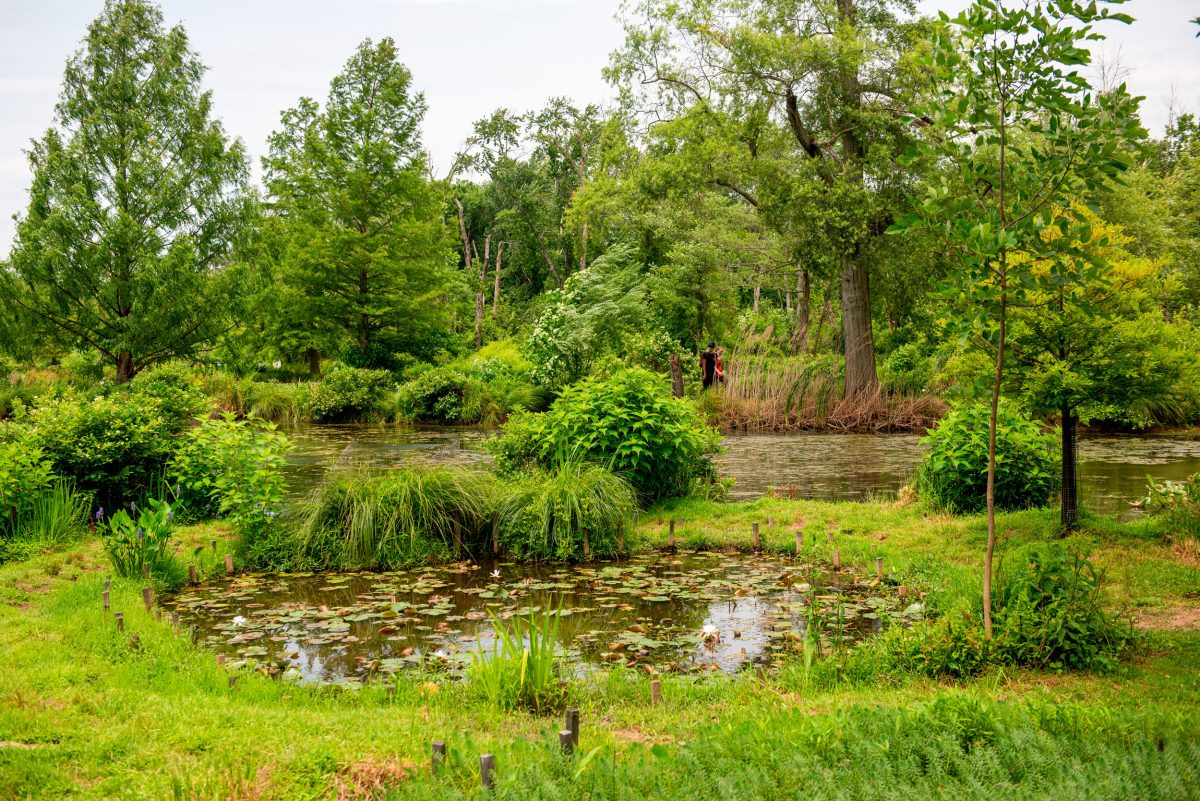
Kenilworth Park and Aquatic Gardens is a national park in Washington, DC, that held the world’s first bioblitz. In the late 1800s, the site grew aquatic flowers for sale, many of them exotic varieties imported from as far away as Egypt and India. Photo by Lori Epstein/Alamy Stock Photo
The idea, said Droege, was for biologists to do the type of thing that comes to them naturally: “Go out and find critters, or a plant, or a fungi, or an isopod, whatever it is that got you to be a biologist in the first place.”
The participants of that initial bioblitz collected 1,000 specimens in 24 hours. Since then, bioblitzes have caught on around the globe. Some are restricted to professional researchers, while others welcome amateur naturalists and citizen scientists to help scout and record the biodiversity around them.
The Hakai Institute held its first bioblitz on Calvert Island in 2017. The Calvert observatory is primarily a marine research station, part of the Marine Global Earth Observatory (MarineGEO). While each independent station conducts its own science, often in conjunction with partner universities, MarineGEO locations all contribute to an effort facilitated by the Smithsonian Institution to monitor coastal marine life around the globe—tracking changes in biodiversity as climate change and other anthropogenic influences reorder the natural world.

The dock of the Calvert Island Ecological Observatory extends into Pruth Bay, British Columbia. Established in 2009, the observatory has provided a base for research in biology, oceanography, glaciology, and archaeology. Photo by Grant Callegari
The 2017 bioblitz was a unique event, both for its ambition and its participants, convening over two dozen of the world’s leading marine taxonomists for three weeks. Due to its distance from population centers and the expense of transportation and housing, the bioblitz was accessible only to career researchers, with the exception of local volunteers from the Heiltsuk and Wuikinuxv Nations.
By contrast, many bioblitzes last only a day or a weekend, cover territory that anyone can reach by foot or bus, and recruit amateur naturalists. Engaging the public in biodiversity research is a major selling point.
The Holy Grail of Bryology
Back on our Hecate field survey, Starzomski suggests to the group that they leave the water’s edge and clamber up the hill. This cramped half-moon of a beach marks the base of a small mountain; it’s rimmed by a dense layer of bush that’s punishing to walk through but quickly gives way to an open, rolling slope.
The real action is here, in a peat bog pillowed with thick clumps of sphagnum. The acidic soil prevents the few trees that manage to take root from growing too tall—although some are hundreds of years old, the tallest shore pine in sight would snap if I tried to climb it.
The ground beneath me squelches. We’re almost literally walking on water, which comprises up to 99 percent of sphagnum’s weight.
Mindell explains that south of the Great Bear Rainforest, the kind of exposed hillside bog we’re trudging through is exceptionally rare in North America. Below this latitude, peat bogs tend to be restricted to natural depressions where humidity is constant; lacking roots and vascular tissue, mosses have no means of storing or reaching for water, so they must absorb it constantly and directly through their leaves.
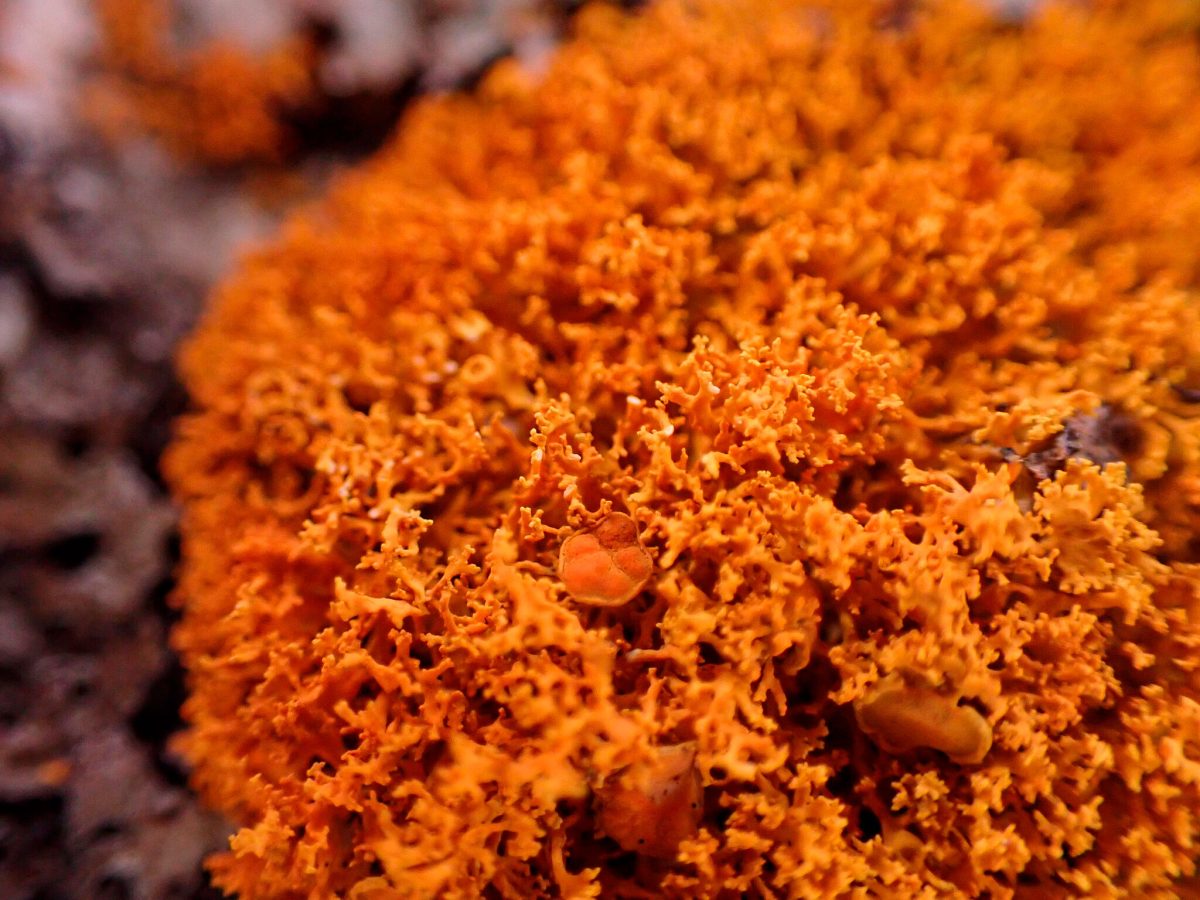
Lichens result from a symbiotic relationship between fungi and algae. The shrubby sunburst lichen (Polycauliona candelaria) lives up to its name with a vibrant color and texture that stands out from other species. Photo by Finn McGhee
That’s why most of the world’s moss species flourish in the dark cracks of rocks, shaded forest floors, and the misty edges of waterfalls—places where moisture is omnipresent. But the precipitation and temperatures on this part of the BC coast allow bryophytes to be more bold.
“Up here,” Mindell says admiringly, “it’s just so constantly wet and cold that sphagnum can pile up right out in the open.”
Then Tucker calls out, “Mindell, I’ve got a Dicranum here and it’s very undulate,” and that’s the end of my conversation with Mindell.
A short way away, a young researcher named Eva Ullström is photographing wisps of black lichen growing on the bark of a stunted shore pine. Beside her, Starzomski unfurls a butterfly net with a telescoping handle. He’s spotted an American emerald—“one of my favorite dragonflies”—sunning itself in the branches of the same tree.
He catches it with a practiced swish of his net, extracts it gently between thumb and forefinger, snaps a shot with his DSLR camera, and sets it free. A few moments later, he catches a click beetle with his bare hand; it seems to pose on his open palm while he points his camera, but then it leaps and disappears in the breeze before he’s able to focus the lens.
“Brutal,” Starzomski groans, as if the wind had just snatched a $100 bill.
There’s a shallow creek trickling down the hillside where rocks are still exposed. A few of the blitzers wend up it like gold miners working a vein. Suddenly, a shout goes up: “Oh my god! Takakia!”
The radio crackles with the news, and the crew, until now dispersed out of mutual sight and earshot, converges once more. Everyone appears spellbound by what looks to me like a crust of green-specked dirt pasted to the side of a wet boulder. McGhee looks up and hands me his field lens with the magnanimous air of an artist greeting someone who just sleepwalked into the Louvre.
“You,” he says, “are one of very few humans ever to see this.”
First collected in the 19th century, this ancient, ambiguous plant sparked an international dust-up among the botanical community when it was first discovered. Was Takakia a liverwort or a moss?
The unassuming Takakia lepidozioides is one of two species in the genus Takakia. This genus caused consternation among biologists and taxonomists who struggled with its classification after the first Takakia was discovered in the 19th century. Photos by Dan Tucker and Randal Mindell
Botanists argued about it for decades, based on structures that had up until then differentiated the two—for instance, liverworts had lobed leaves (or no leaves at all) versus moss’s pointed ones; liverworts also had springlike spore dispersal structures and stored their energy in oil-producing organelles. Then Takakia came along and bridged many of these distinctions.
“No one really knew,” explains Tucker, “because it has a lot of characteristics liverworts have, like oil bodies in their leaf cells, but it also just looks like a moss.”
Under the lens, this film of grime becomes a lush turf from which slim treelike shoots erupt; these grow up to two centimeters long and sprout tiny leaves, no longer than one millimeter, that divide and flick up like a snake’s forked tongue.
“And one of the ways you can ID it is really weird, too,” Tucker says. “When Takakia is dehydrated, its oil bodies give off a cinnamon scent, so one of the things you can do is smell it dry.”
“But,” I ask, “isn’t it fairly typical for biologists to argue over the classification of a newly discovered species?” Tucker shakes his head.

Shore blue-eyed grass (Sisyrinchium littorale) is not actually a grass but a member of the iris family. Photo by Bennett Whitnell
“Questioning a species is one thing,” he says, “but it’s not usually to this level of, what phylum is it in. Like usually we could tell, okay, this thing is a flowering plant, say, and not … ”
“It would be the same as wondering,” Mindell interjects, “is it a conifer or a flowering plant? And technically the debate would be more like, Is this a horsetail or a mango? Things that have almost nothing to do with each other.”
Not until well into the 20th century were the sexual structures that define all mosses—egg-producing archegonia and sperm-producing antheridia—discovered on a sample of one of these mosses by the Japanese botanist Noriwo Takaki. Finally, the matter was resolved, and in the mid-1950s, almost a century after its discovery, the new genus of moss was named.
“The holy grail of bryology,” says Tucker.
The two species that make up Takakia are thought to be the oldest living mosses, some of the first plants on Earth to leave the sea and begin life’s colonization of land—something that could only happen after algae had exhaled enough oxygen to wrap the planet’s atmosphere in a protective layer of ozone.
By now, McGhee is 10 boulders away and finding patches of Takakia everywhere, always and only in the north-facing cracks of exposed rock. He pauses, looks around, and says to no one in particular, “This place is delivering like crazy.”

Pacific gooseneck barnacles (Lepas pacifica) grow on debris floating in the open ocean as well as on species such as giant kelp (Macrocystis pyrifera), shown here. When full-grown, several species are eaten and prized as delicacies. Photo by Finn McGhee
iNaturalist and the Libraries of Life
During the 2017 Calvert Island bioblitz, participants collected specimens of approximately 1,000 marine species and sequenced their DNA. Each of those DNA samples was submitted to the Barcode of Life Data System (BOLD), a project run by the Centre for Biodiversity Genomics at the University of Guelph, Ontario.
The ambition of BOLD is to build an online DNA catalog of every living thing on the planet: a library of life. As of April 2023, the library had gathered DNA from almost 345,000 organisms, out of an estimated 8.7 million on Earth.
But there are other ways to catalog organisms, and other libraries.
Enter iNaturalist, the tool that powered the 2022 blitz. In the most basic terms, iNaturalist is an online platform—both an app and a website—to which anyone can upload a photograph of any wild organism (sightings of captive pandas in your local zoo are not the point here). As of January 2023, it had 3.2 million users, who mostly refer to it as iNat. Their photographs become “observations,” which is iNat-speak for specimens. If the photograph is clear enough, and if enough others like it already exist in the database, iNat’s algorithm will provide an educated guess at what it is.
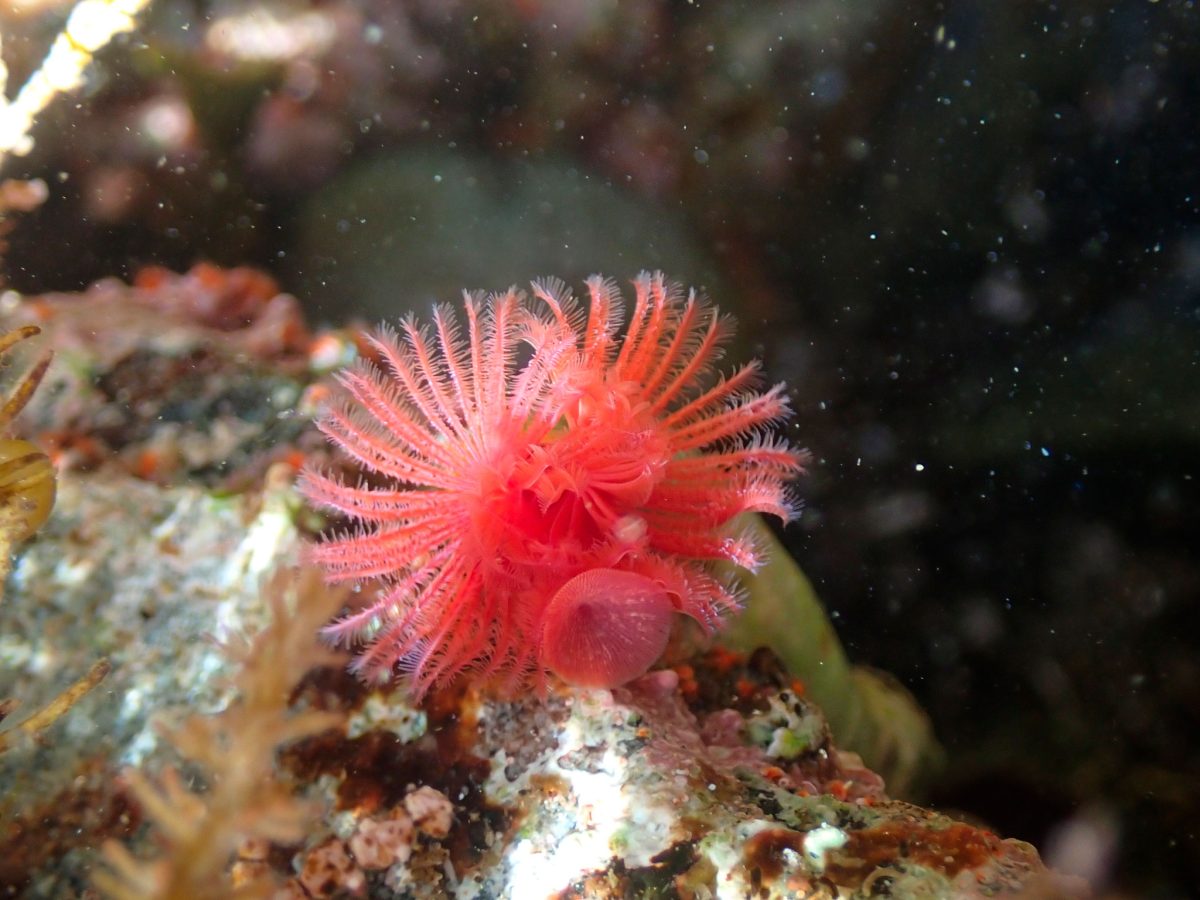
First and third photo: Giant green anemone (Anthopleura xanthogrammica) and red-trumpet calcareous tube worm (Serpula columbiana) provide pops of color in a tide pool. Second photo: A not-so-appetizing example of a marine tunicate known as sea pork (Aplidium californicum) adds some bizarre to the bioblitz. Photos by Julia Carr and Braden Judson
Used in this way, iNat can be thought of as the Shazam app for citizen scientists: where Shazam tells you what song you’re listening to, iNat tells you what plant or animal you’re most likely looking at.
That’s just the beginning. More knowledgeable users can also ID their own observations, regardless of what iNat thinks it is. And if neither you nor the algorithm knows whether you’re staring at a roughskin newt or a northwestern salamander, that’s where things get interesting.
Since iNat is open-source, anyone in the world—scholarly expert or knowledgeable layperson—can, and will, look at your picture and ID it themselves. Now it’s no longer Shazam but Wikipedia—“the ultimate crowdsource,” says Starzomski.
Starzomski regards iNat as “the most important development in biodiversity science in at least 100 years.”
That’s a big claim, as he well knows.
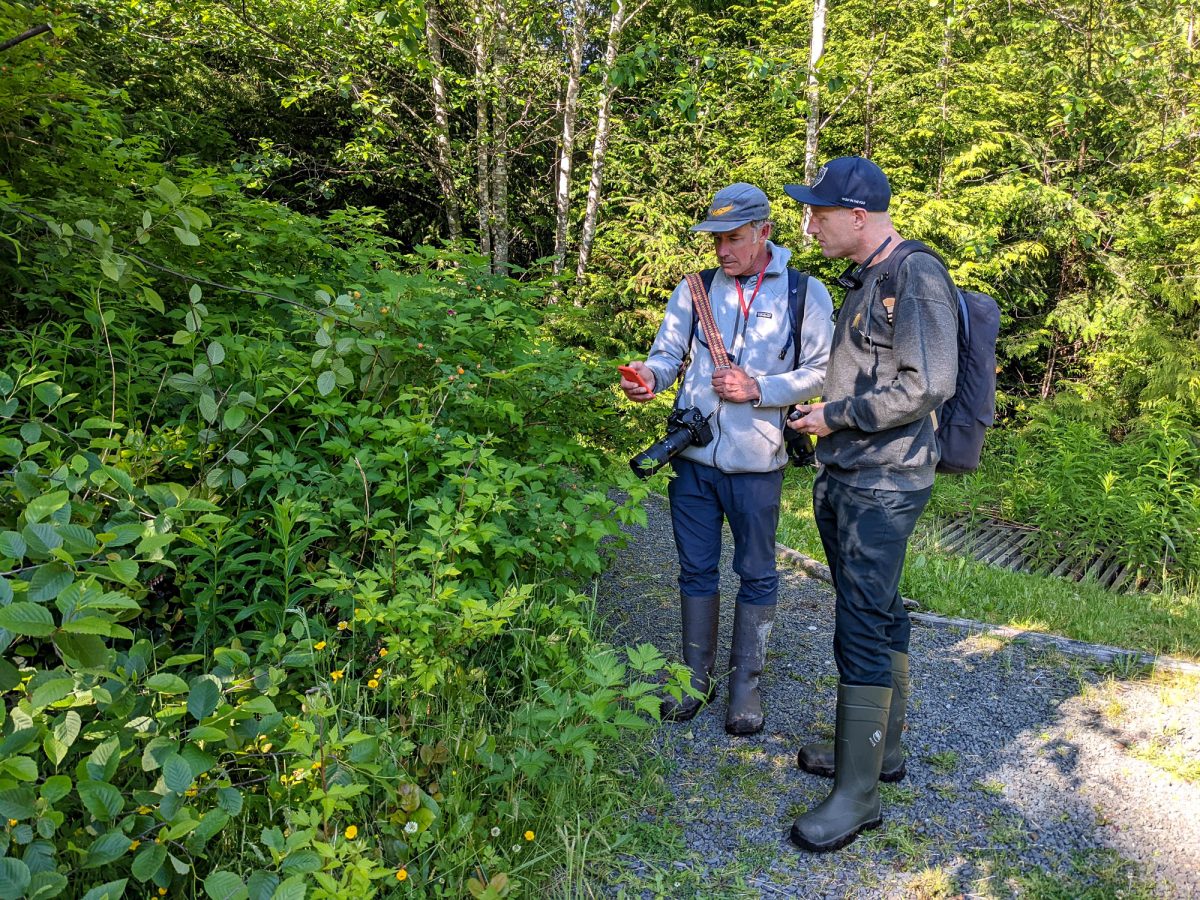
Brian Starzomski (left), an ecologist from the University of Victoria in British Columbia, demonstrates the iNaturalist app for author Arno Kopecky. Photo by Kelly Fretwell
“This may sound like hyperbole,” he acknowledges, “but no other tool has enabled so many location and timestamped observations of species by so many people.”
By the end of 2022, iNat users had collectively made almost 124 million observations of over 386,000 species. It’s that sheer scale of information, and the size of the community behind it, that excites Starzomski. The millions of iNat users have expanded field biology’s gaze beyond anything the world’s trained scientists alone could ever view.
“The community is just as important as the observer,” Starzomski says. “There might be an expert in Russia or Sweden or Uruguay on a particular type of beetle, for example. And we might put it onto iNat just as ‘beetle’—we don’t know what kind—and they might come in and identify which species it is.”
Thanks to the combined might of numbers and expertise, iNat has essentially developed a new system of peer review—less rigorous than the one contributors to Nature go through, certainly, but one that offers a new suite of applications. Consider the Global Biodiversity Information Facility (GBIF), another library-of-life database to which iNat is a major contributor.
Like BOLD, GBIF is an online storehouse of information about where and when species have been recorded (this one based out of Copenhagen, Denmark, and collectively funded by dozens of national governments).
If you wish to add to the knowledge of how far north a monarch butterfly’s range extends, or what time of year sandhill cranes arrive at Calvert Island, all you need is a camera. Upload your photo to iNat, get the species confirmed by a second user, and your contribution to science will automatically become part of GBIF’s weekly update.
“So we don’t have to be experts, we just have to be really good observers,” Starzomski says. “We go out and do our best to observe as much as we can, and rely on this community of folks to help us with the ID.”
“It’s an international conversation,” agrees John Reynolds, Starzomski’s collaborator in bringing the 2022 Hakai Institute bioblitz together.
“It’s essentially a form of social media—not quite as chatty as many of the others, but it is a way of connecting people who are interested in the outdoors.”
First photo: Braden Judson gets a close-up of an organism on a Sitka spruce trunk. Second photo: Lichen agaric (Lichenomphalia umbellifera) produces a gilled mushroom. Third photo: Julia Carr uses a humble point-and-shoot camera to photograph bryophytes on a boulder. Photos by Bennett Whitnell, Eva Ullström, and Kelly Fretwell
Like Starzomski, Reynolds is an ecologist and conservation biologist with an encyclopedic knowledge of flora and fauna in Canada; he is also the former chair of the Committee on the Status of Endangered Wildlife in Canada. Both Reynolds and Starzomski have been surveying wildlife at the Hakai Lúxvbálís Conservancy as well as teaching field studies there since the early days of the Calvert Island Ecological Observatory, which was founded in 2009.
That was the year they met, when Hakai Institute cofounder Eric Peterson invited them up for a guided tour. Both Starzomski and Reynolds soon began leading field studies at Calvert, and in 2018, they inaugurated the use of iNat for the terrestrial portion of the Hakai Institute’s second bioblitz.
“Once I realized what iNaturalist was capable of doing,” Reynolds says, “I started to see the value in it for conservation—for understanding where threatened species were.”
As with Wikipedia, iNat has an open-source design that’s both a strength and a weakness. Arguments can arise when multiple users disagree on the species ID. When there is a consensus, that doesn’t mean it’s correct. Lacking the personal and political motives that skew many a Wikipedia entry, iNat users generally post in good faith, but there remains a problematic blurring of expert and amateur opinion: for an observation to be classified as “research grade” on iNat, two-thirds of identifiers must agree on what the species is. It doesn’t matter if the dissenting third is more qualified than the majority.
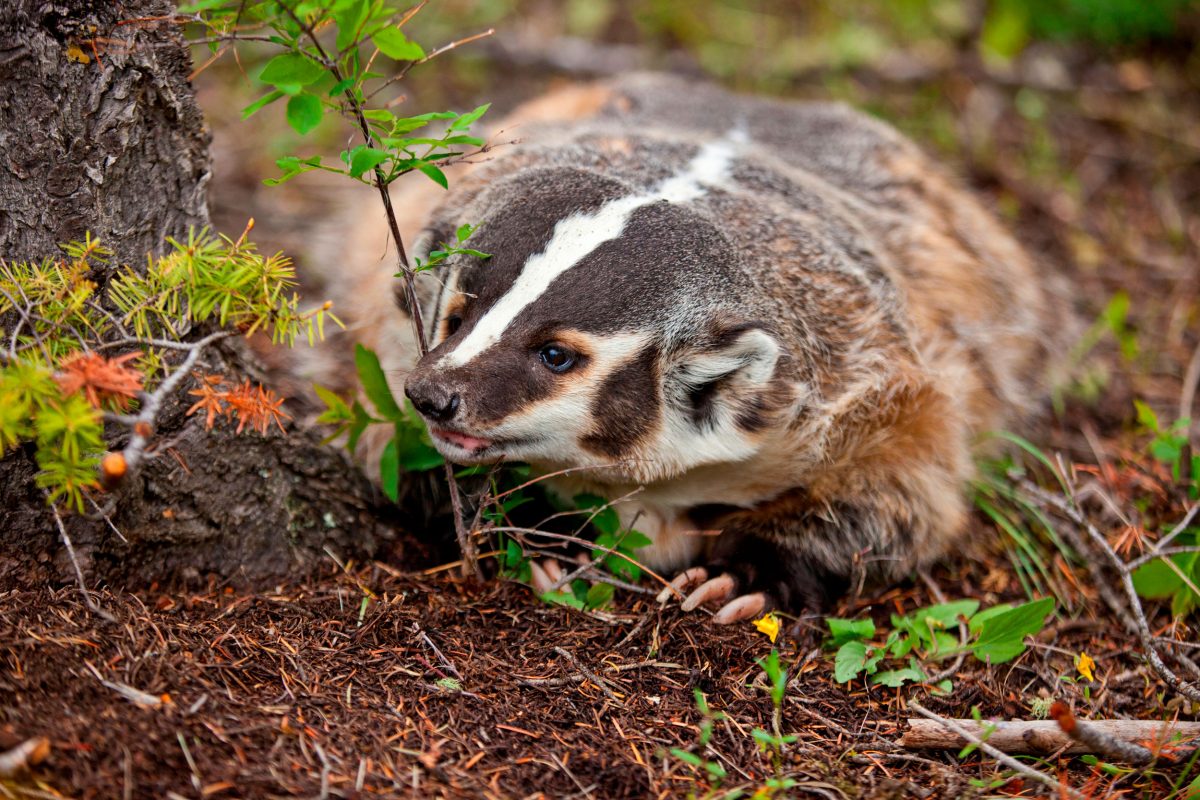
The American badger (Taxidea taxus), an endangered species in Canada, is part of the Mustelidae family that includes wolverines, weasels, and ferrets. Photo by Gillian Merritt/Alamy Stock Photo
There is also a weakness to the iNaturalist data set because much of it is logged by citizens in a haphazard way, rather than gathered systematically by trained field researchers. Organisms that are hard to photograph—because they move too fast, or are too small, or deliberately avoid humans—are underrepresented.
Perhaps most telling of all, 93 percent of iNat’s observations are clustered within one kilometer of a road, footpath, or waterway.
“Haphazard is the right word,” Reynolds agrees. “But there are many different ways of knowing. People don’t use some sort of rigorous experimental design or systematic survey, so it lacks that. But it’s information, and information is data, so it’s a matter of using it correctly.”
Anyone doubting the scientific contribution of iNat’s data, he added, need only peruse the reams of papers that cite iNat in peer-reviewed science journals every year.
As Starzomski puts it, there are two ways to collect population data in the field. “You can spend a lot of time doing a very repeated, planned-out survey, and get an answer for one species.” Then there’s the iNat way: “Collect gobsmacking amounts of data on all kinds of different things, and say, ‘This is what’s here.’”
Exploring Protected Spaces
Whatever iNat lacks in pinpointed rigor—it won’t tell you the precise population of bighorn sheep in Banff National Park, in Alberta, for example—it makes up for in scope. It picks up signals in the overall range and density of certain species and helps experts know where to point their attention.
“This is the kind of thing that conservation biologists want to know,” Reynolds emphasizes. “It tells people where not to build a shopping mall or what forest should be protected.”
That’s arguably iNat’s greatest practical application, and nothing illustrates it better than the BC Parks iNaturalist project that Reynolds and Starzomski initiated in 2019.
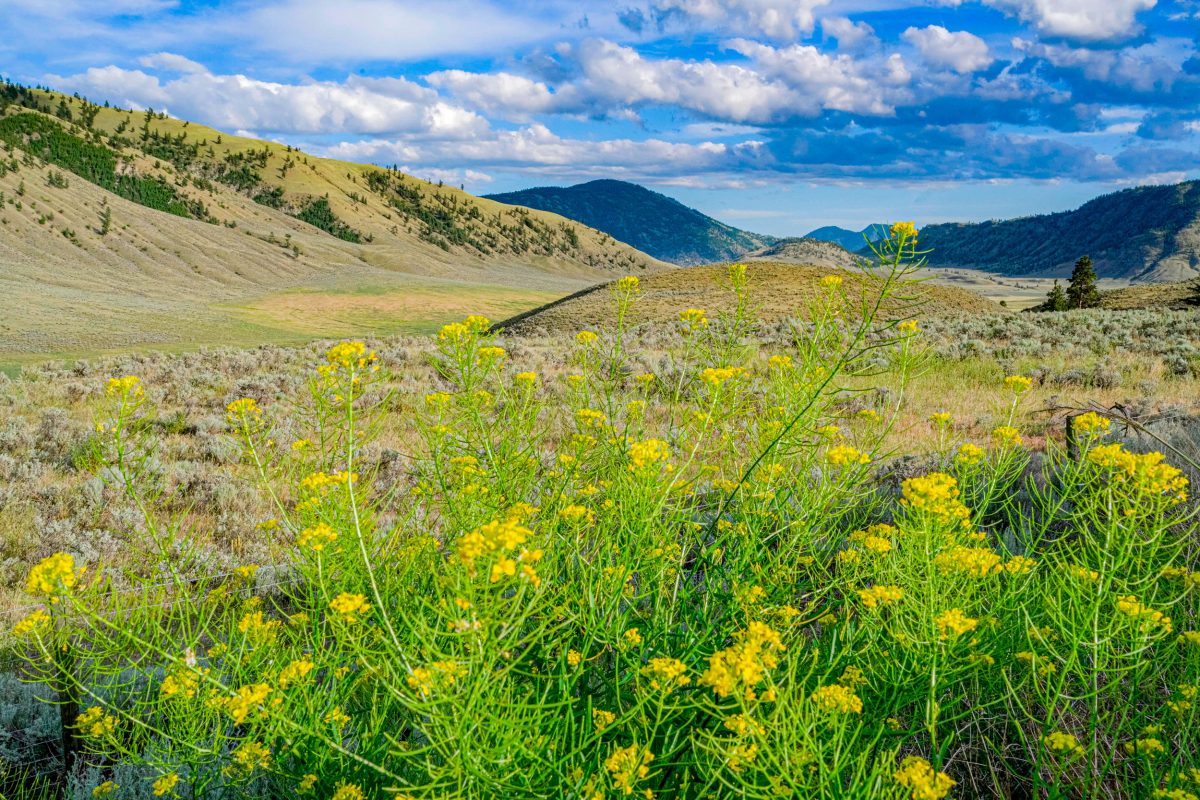
Biologists involved in the BC Parks iNaturalist project have gathered over 680,000 observations across the province, including nearly 27,000 in the South Okanagan Grasslands Protected Area pictured here. Due to such impacts as livestock grazing and agriculture, several grassland species—including the white-tailed jackrabbit, sage grouse, and burrowing owl—have disappeared from the region. Photo by Michael Wheatley/Alamy Stock Photo
There are over 1,000 protected areas in British Columbia. “But if you go and look for data on what’s in those places, they’re very hard to find,” Starzomski says.
“A lot of these places were established without any knowledge at all of what the biodiversity was in them. So we thought, Here’s a nice defined set of places that we can go and work in.”
Last year, 2022, marked the fourth year that Starzomski and Reynolds hired a summer team of students and recent graduates to conduct biodiversity surveys in protected areas and record their findings on iNat.
The field crew made over 135,000 observations of almost 6,000 species in 55 parks. That data joined the project’s ever-rising tally. Going into summer 2023, the BC Parks iNaturalist project has accumulated more than 680,000 observations in total, mapping 11,000 species in almost 750 protected areas.
The field crew are more rigorous in their iNatting than casual hikers or boaters. They deliberately go beyond that one-kilometer boundary surrounding most citizen scientist observations, and they seek out certain species, taking hundreds of photos each day.
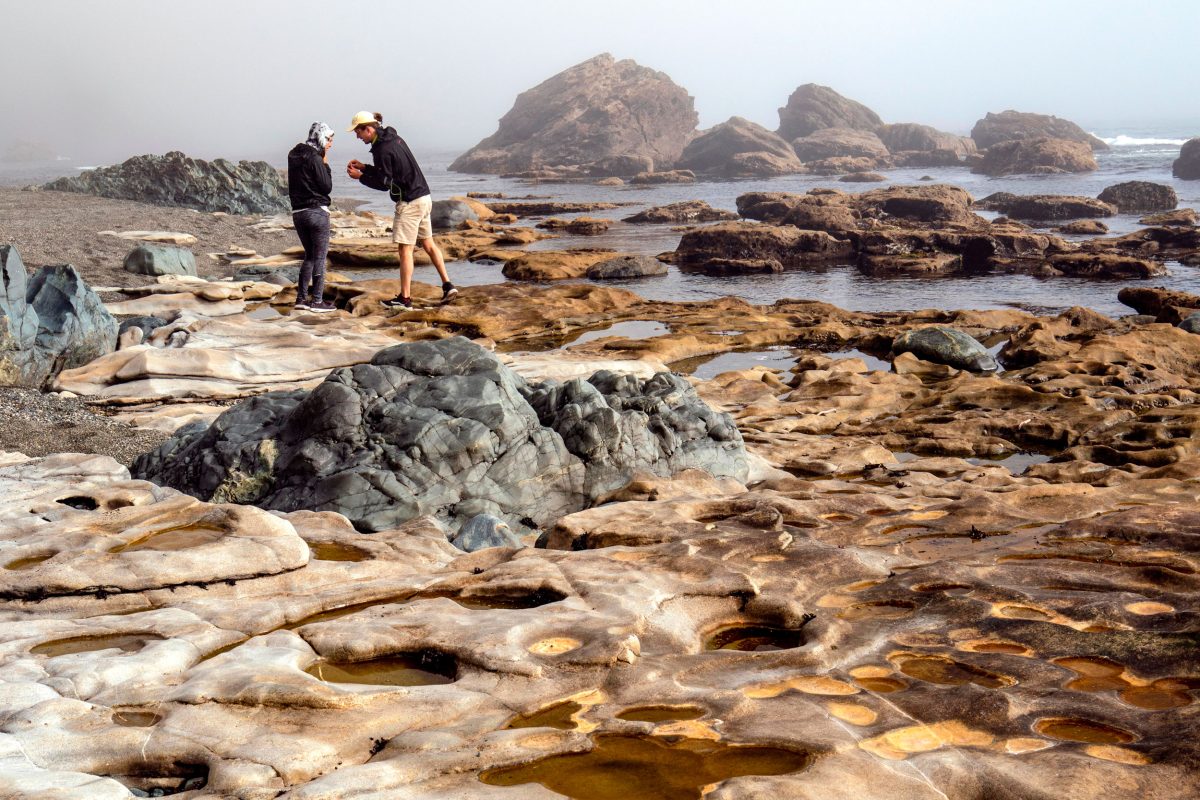
Visitors explore the intertidal zone at Sombrio Beach, part of Juan de Fuca Park on Vancouver Island, British Columbia. Photo by Bill Gozansky/Alamy Stock Photo
“We’re helping [BC Parks] by analyzing the data and showing them some trends in biodiversity hotspots, targeting species that other people don’t necessarily go and look for like mosses and liverworts,” Starzomski says.
“We can provide them with all kinds of data at modest cost, in a way that’s easy for people to look at.” Of course, the point is to do more than look. British Columbia, by far the most biodiverse province in Canada, also has the most species at risk.
“We can’t plan for what we’re going to save,” Starzomski says, “if we don’t know what’s left.”
A version of this article first appeared on the Hakai Institute’s website.


